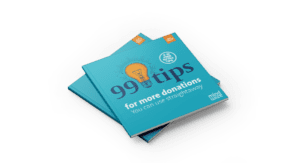Subscribe to our newsletter
Get fresh insights to help your charity grow.
The biggest lesson to be learnt from years of eye-tracking research is that there are two phases when people start viewing their mail or email. There is a scanning phase and a reading phase. If people give up before completing the scanning phase, then there is no chance of them reading the content. It is also known that everyone does this in roughly the same way. And that this is unconscious behaviour that can’t be changed.
The scanning phase only lasts a few seconds. Below are some tips on how to get your message across in that short space of time.
When you look at your text, do you feel like getting started or are you presenting a ‘Wall of Text’? Why not alternate line length and paragraph size? This makes a text more pleasant to read.
Text that is justified or centre-aligned is much more difficult to read.
Words in CAPITAL LETTERS take more effort to read.
It often looks good, but is difficult to read. One sentence is fine, but definitely not a whole letter.
Use it in moderation. And note: older people (our main target group) have difficulty with contrast and therefore legibility.
Use:
to guide your reader in the viewing phase.
Use a handwritten text, an underline, an arrow. Anything that gives your letter a more personal look. Yes, you can also do this in an e-mail.
Better to use a legible but unauthentic signature than a real, illegible scrawl.

Just have a look in books and newspapers. They all use serif typeface, because this is much easier to read. For example Arial is a sans-serif typeface (without feet), while Times is a ‘serif’ typeface.

Source: https://en.wikipedia.org/wiki/Serif
Fundraising letters are mostly read by seniors. Make sure your text is legible (minimum font size 12). Rather have two sides in size 12 than cramming size 9 on one side.
If you just look at your highlights, do they tell your story: problem, need, solution and impact?
Based on our 30 years of experience, we have written a practical guide for fundraisers: ’99 Tips for more Donations’. We explain clearly which techniques positively influence the response.
Download our 99 tips and read more about:

And much more…
This book is a practical guide for all fundraisers. Download the book and apply the tips today!
Get fresh insights to help your charity grow.